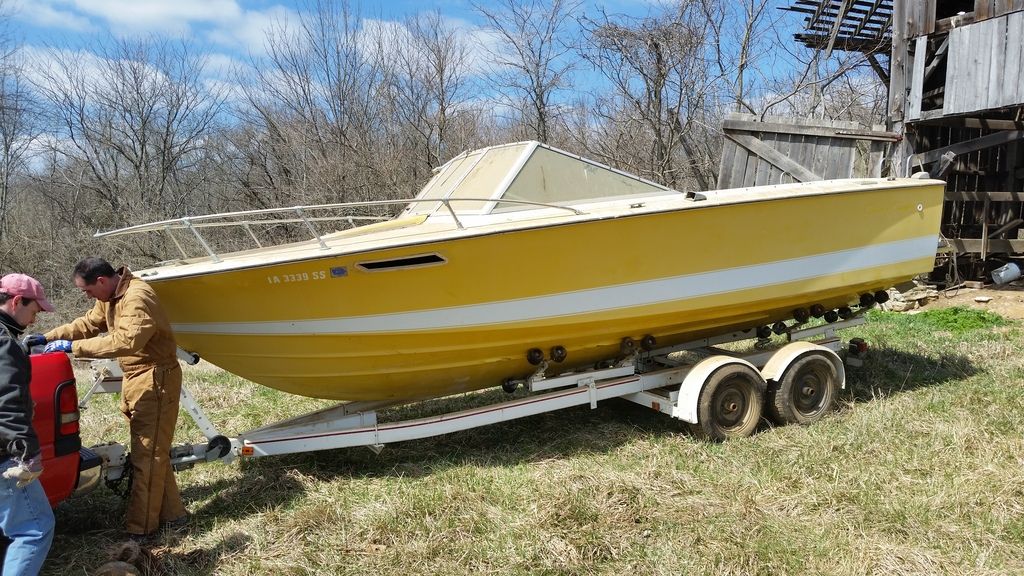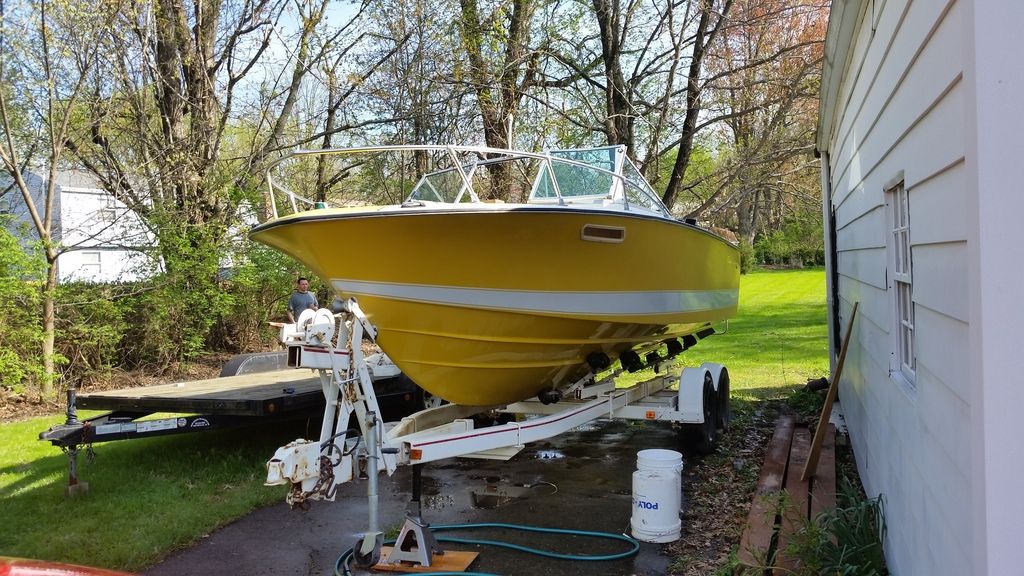Not sure what you did but your pics are not working. Here's what I recommend when trying to restore Oxidized Gelcoat...
Restoring old gelcoat is a matter of degrees. You?ll need to inspect the health of your gelcoat and decide which solution is best for you. If restoring the hull requires wet-sanding or rubbing compound, the general rule is to start with the least aggressive approach. Only when it?s obvious that you are making no progress with an abrasive material (either sandpaper or compound) should you move up to more aggressive media.
If the gelcoat is deeply scratched, gouged, or looking thin in some areas, it may be time to sand and paint the hull. Remember that gelcoat is only a thin layer to begin with?it varies from boat to boat, and it?s thinnest at the bow, corners, and curves?and an aggressive buffing compound may take that layer down to fiberglass. Using a gelcoat restorer is another option, but be aware of their pros and cons.
If oxidation and minor scratches are your problems, a rubbing compound system (followed by a wax) should be enough to restore shine. However, if the rubbing compound is getting you nowhere (try a test patch), and after washing the rubbed area, the oxidation is still visible, it?s time to wet-sand the hull. Assuming, of course, you?ve got enough gelcoat to sand.
Follow the wet sand with a fast-cut, coarse-grit rubbing compound. This can be followed by a medium- or fine-grit compound; if the boat is less than three years old or the oxidation is only mild, you can go straight to a medium- or fine-grit compound. Follow the compounds with a polish and a good boat wax like Collinite?s No. 885 Fleetwax. A good wax will help protect the hull, so you won?t have to buff so aggressively in the future.
Buffing Techniques and Tips
Wet sanding: Start with 600- to 800-grit wet-dry sandpaper. While you can wet-sand by hand using a rubber block, I suggest using a pneumatic or electric, dual-action (DA) orbital sander to make the job faster 3M recommends finish sanding with 1500-grit because it?s easier to buff out a 1500-grit scratch then an 800-grit one. Be sure to keep the hull wet. If you?re sanding by hand, soak the sandpaper in a bucket of fresh water until you?re ready to use it. Be very careful at the hull corners and the top of the topsides where gelcoat is usually the thinnest.
If you?re using an electric sander, mist the hull surface with a spray bottle. Mix a few drops of dish detergent in the water to keep the hull or paper evenly wet and keep it wetter longer. Rinse the surface often to look for potential burn-through areas, and look at it from several angles. You can use a window squeegee to quick dry the surface after a rinse to get a low-glare look at the gelcoat. Do not use circular movements. Wet-sand until the hull has an even dullness, a matte finish; then rinse with fresh water.
Compounds: Apply the compound generously to the buffing pad, keep it wet, and go slowly. If you don?t feel any drag on the pad, and it?s sliding around during application, it?s time to clean or change the pad. Scrape it and add more product?a star tool or a screwdriver can help clean a loaded pad?or change the pad. After applying the compound, wipe off excess with a clean rag; if it?s hard to wipe off, you can wet the area with fresh water, then wipe.
Compounding Tools
A successful refinishing job is the result of using the right products and the right tools. I recommend using a machine polisher for applying rubbing compound Wool buffing pads are better than foam or cotton because they hold the rubbing compound better. Quality pads can last years. To reuse a buffing pad, wash it in a washing machine using warm water.























